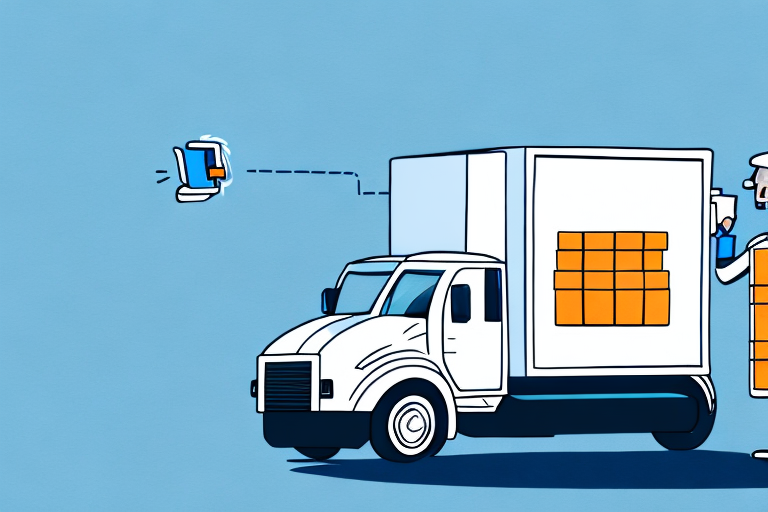Importance of Proof of Delivery Documents
In today’s fast-paced business environment, having proper documentation is essential to ensure that deliveries are made on time and to the correct recipient. A Proof of Delivery (POD) document serves as a record of delivery, providing evidence that goods or services have been delivered and received by the customer. This documentation is crucial for managing logistics efficiently, resolving disputes, and enhancing customer satisfaction.
Legal Significance
A POD document acts as legal evidence of the delivery of goods or services, which is vital in case of any disputes. It verifies that the goods have been accepted by the correct person and confirms the date and time of delivery. This information is essential if discrepancies arise between the buyer and seller, offering protection to both parties. Additionally, POD documents can support insurance claims by proving that items were delivered in good condition.
Dispute Resolution
In instances of disagreements regarding deliveries, a POD document serves as concrete evidence to support claims. This can help businesses avoid legal battles and maintain positive relationships with customers by providing clear proof of delivery.
Customer Satisfaction
Providing customers with a POD document offers them peace of mind, assuring them that their products or services have been delivered safely and on time. This transparency builds trust and loyalty, leading to repeat business and positive word-of-mouth referrals.
Types of Proof of Delivery Documents
There are various types of POD documents used across different industries, each with its advantages and disadvantages. Choosing the right type depends on your business needs and operational environment.
Electronic Proof of Delivery (ePOD)
Electronic PODs are increasingly popular due to their convenience and efficiency. They can be easily accessed and shared through digital platforms, eliminating the need for physical storage space. According to a Forbes article, businesses adopting ePOD systems report a 30% increase in delivery accuracy.
Paper-Based PODs
Traditional paper-based PODs are still widely used, especially in areas with limited internet connectivity. They are reliable but require physical storage space and are prone to loss or damage.
Handwritten PODs
Common in industries requiring a personal touch, such as flower or gift deliveries, handwritten PODs can include special messages or instructions. However, they may lack the reliability and durability of electronic or paper-based PODs.
Delivery Confirmation Emails
Sending delivery confirmation emails is another method of providing POD. This approach offers a digital record and can include tracking information, enhancing transparency for the customer.
Key Elements of a Proof of Delivery Document
A comprehensive POD document should contain specific information to ensure its effectiveness and legality.
Sender and Receiver Details
Include the names, addresses, and contact information of both the sender and the receiver to clearly identify the parties involved in the transaction.
Date and Time of Delivery
Accurate timestamps are crucial for verifying when the delivery occurred, which can be essential in resolving disputes or processing insurance claims.
Details of Delivered Goods or Services
Provide a clear description of the items or services delivered, including quantities, specifications, and any relevant identifiers such as serial numbers or order numbers.
Recipient’s Signature
The recipient’s signature is vital as it serves as legal proof of acceptance. In electronic POD systems, digital signatures may be used to ensure authenticity.
Additional Information
Including GPS location data, timestamps, and images can provide additional evidence of delivery. Special instructions or notes related to the delivery should also be documented.
Ensuring Accuracy in Proof of Delivery Documents
Accuracy in POD documents is essential to avoid future disputes and legal complications. Implementing the following practices can enhance the reliability of your POD records:
Utilizing Technology
Incorporate tools such as barcode scanners, GPS trackers, and digital signature pads to capture and record delivery details accurately. Technologies like GPS tracking can provide real-time location data, ensuring precise delivery records.
Training Personnel
Proper training for delivery personnel is crucial. They should understand the importance of accurate documentation and be proficient in using any technology or systems your business employs for POD.
Implementing Checks and Balances
Establish a verification process where multiple personnel, such as drivers, recipients, and supervisors, confirm delivery details. This reduces the likelihood of errors and ensures comprehensive documentation.
Quality Control
Regularly audit POD documents to identify and correct any inconsistencies or errors. A robust quality control process helps maintain the integrity of your delivery records.
Leveraging Technology for POD Management
Adopting technology in creating and managing POD documents offers numerous benefits, including increased efficiency, accuracy, and customer satisfaction.
Electronic POD Systems
Electronic POD systems streamline the creation, management, and storage of delivery records. These systems enable quick access to delivery history, facilitating better logistics management and faster dispute resolution.
Real-Time Tracking and Updates
With electronic PODs, businesses can provide customers with real-time updates on their delivery status. This transparency enhances customer trust and improves overall satisfaction.
Digital Signatures
Incorporating digital signatures into your POD process increases security and reduces processing times. Digital signatures are easier to verify and protect against fraud compared to traditional signatures.
Automation and Integration
Integrating POD systems with other business tools, such as inventory management and CRM systems, automates workflows and ensures seamless data flow across different departments.
Best Practices for Storing and Retrieving POD Documents
Proper storage and retrieval of POD documents are essential for maintaining reliable delivery records and ensuring easy access when needed.
Secure Storage Solutions
Store both electronic and physical copies of POD documents in secure locations. For electronic documents, use encrypted cloud storage solutions to protect sensitive information from unauthorized access.
Cloud-Based Storage
Cloud storage offers the advantage of accessibility from anywhere in the world, facilitating quick retrieval and sharing of POD documents. Services like Amazon S3 or Microsoft Azure Blob Storage provide reliable and scalable storage options.
Organized Filing Systems
Implement a structured filing system, both digitally and physically, to ensure that POD documents can be easily located and retrieved when needed. Use consistent naming conventions and categorize documents logically.
Access Control
Restrict access to POD documents to authorized personnel only. Implement role-based access controls to ensure that only those who need to access the documents can do so.
Tips for Creating Professional Proof of Delivery Documents
A professional-looking POD document reflects your business’s attention to detail and commitment to quality. Follow these tips to create effective and professional POD documents:
Use Templates
Utilize customizable templates to ensure consistency and completeness in your POD documents. Templates help maintain a standard format, making the documents easier to read and understand.
Incorporate Branding
Include your company’s logo and branding elements in the POD document. This not only reinforces your brand identity but also adds a professional touch to the document.
Clear and Concise Descriptions
Provide clear and concise descriptions of the delivered products or services. Use bullet points or tables to organize information, making it easier for the recipient to review the details.
Organized Layout
Ensure that the POD document is well-organized and easy to navigate. Use headings, subheadings, and consistent formatting to present information clearly.
Proofreading
Thoroughly proofread the POD document to eliminate spelling and grammatical errors. Accurate and error-free documents enhance your business’s credibility and reduce the likelihood of misunderstandings.
Return on Investment (ROI) of Implementing Electronic PODs
Implementing electronic POD systems can lead to significant returns on investment by enhancing operational efficiency, reducing costs, and improving customer satisfaction.
Increased Efficiency
Electronic POD systems streamline the delivery process, reducing the time and resources required to manage paperwork. According to a study by McKinsey & Company, businesses that adopt digital POD solutions can increase their operational efficiency by up to 25%.
Cost Reduction
By eliminating the need for paper-based documentation, businesses can significantly reduce printing and storage costs. Additionally, reducing errors in delivery documentation minimizes the costs associated with dispute resolution and returns.
Enhanced Accuracy
Electronic POD systems leverage technology to capture accurate delivery data, reducing the likelihood of errors and improving the reliability of delivery records.
Improved Customer Satisfaction
Providing real-time delivery updates and transparent documentation enhances the customer experience. Satisfied customers are more likely to become repeat customers and refer your business to others.
Environmental Benefits
Reducing paper usage contributes to environmental sustainability efforts, which can enhance your company’s reputation and appeal to environmentally conscious consumers.
Conclusion
Creating a reliable and professional Proof of Delivery document is essential for effective logistics management, legal protection, and customer satisfaction. By leveraging technology, implementing best practices, and ensuring accuracy in your POD processes, your business can enhance its operational efficiency and build stronger relationships with customers. Adopting electronic POD systems not only offers significant returns on investment but also positions your business for future growth and success.




















